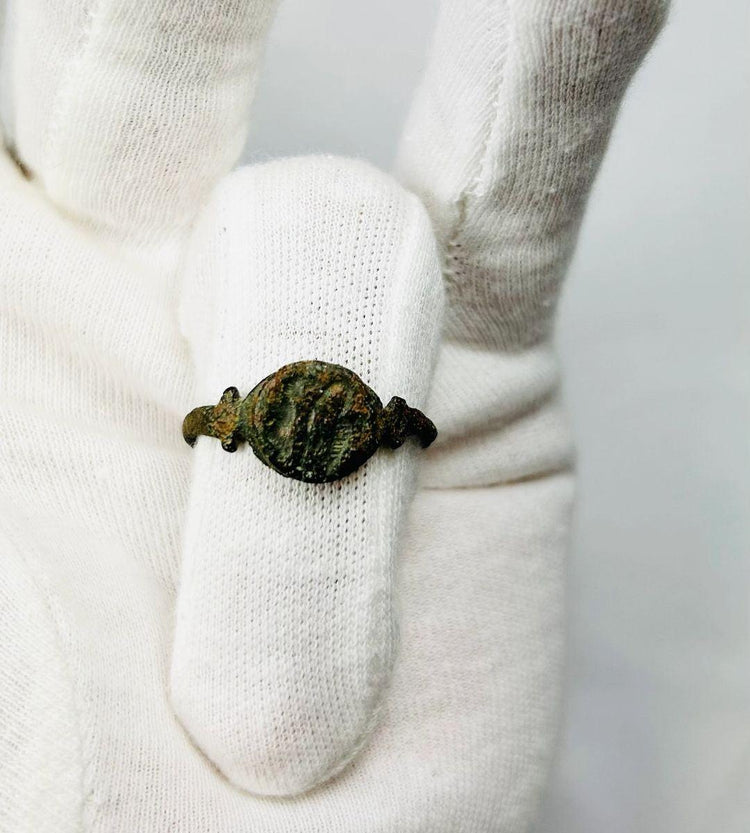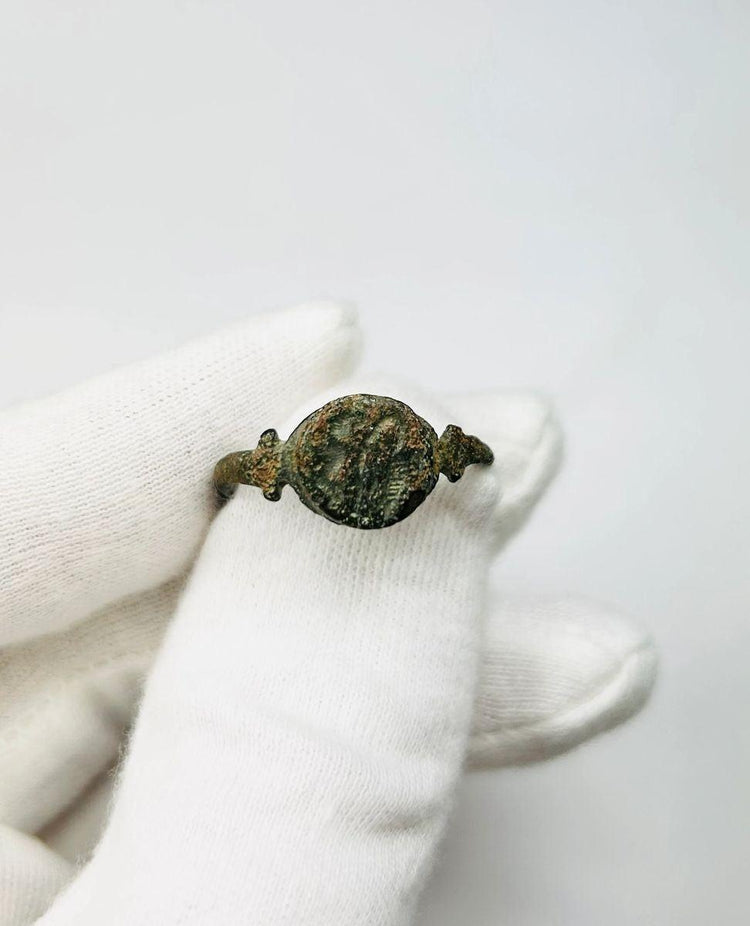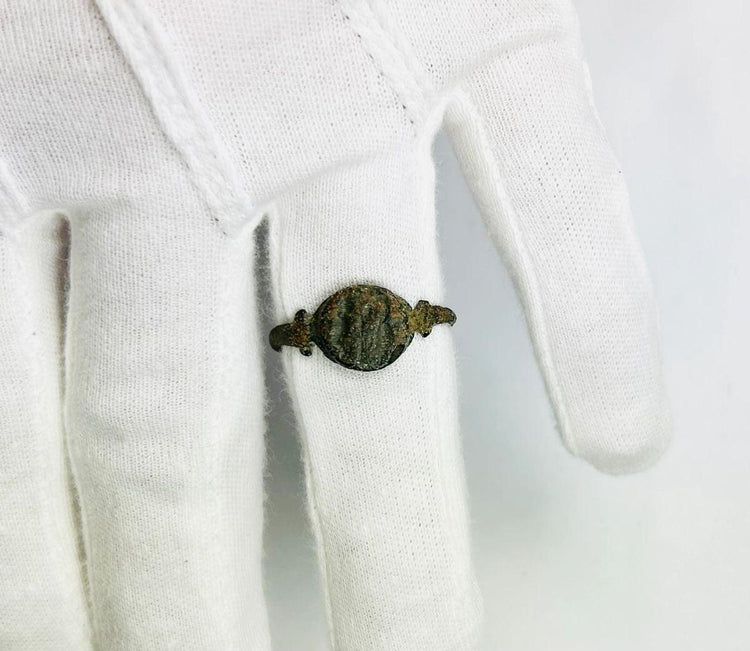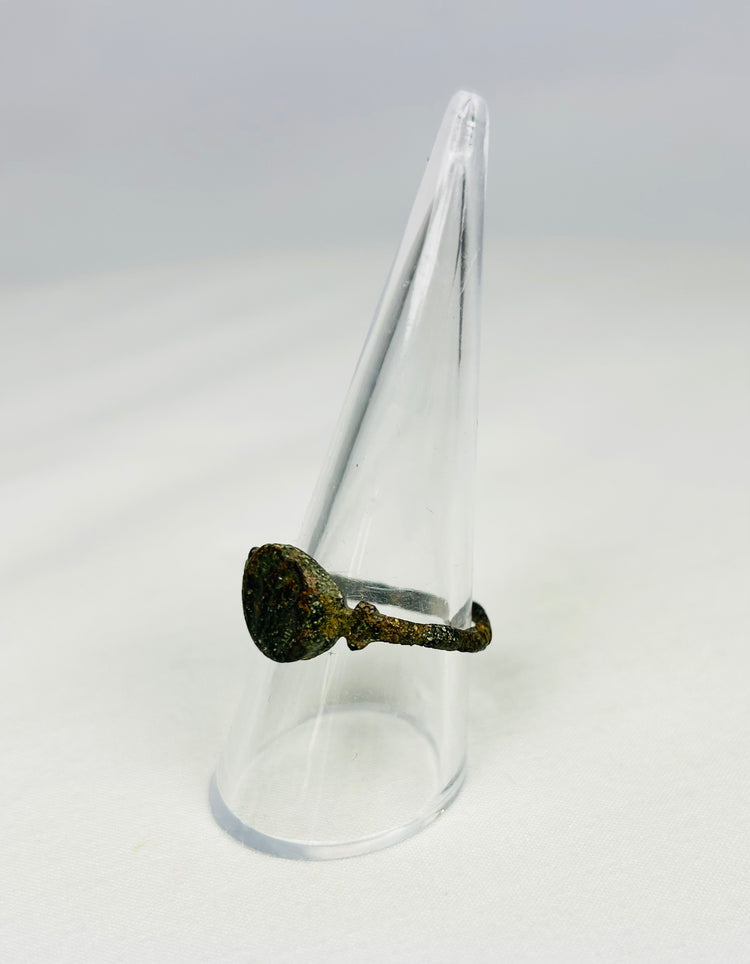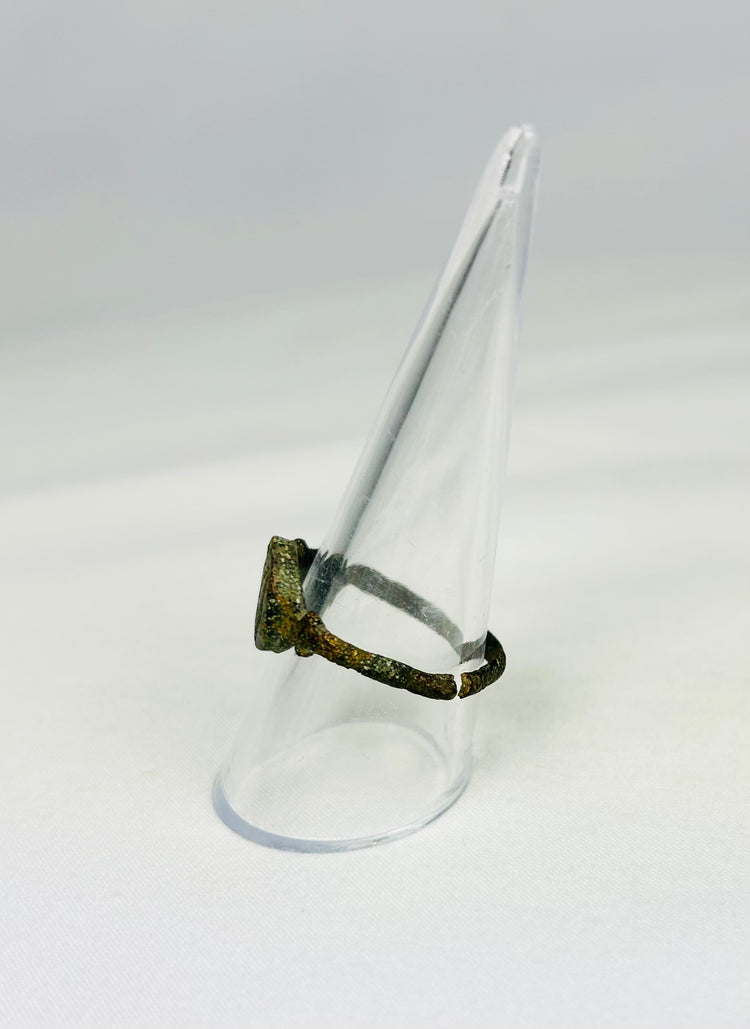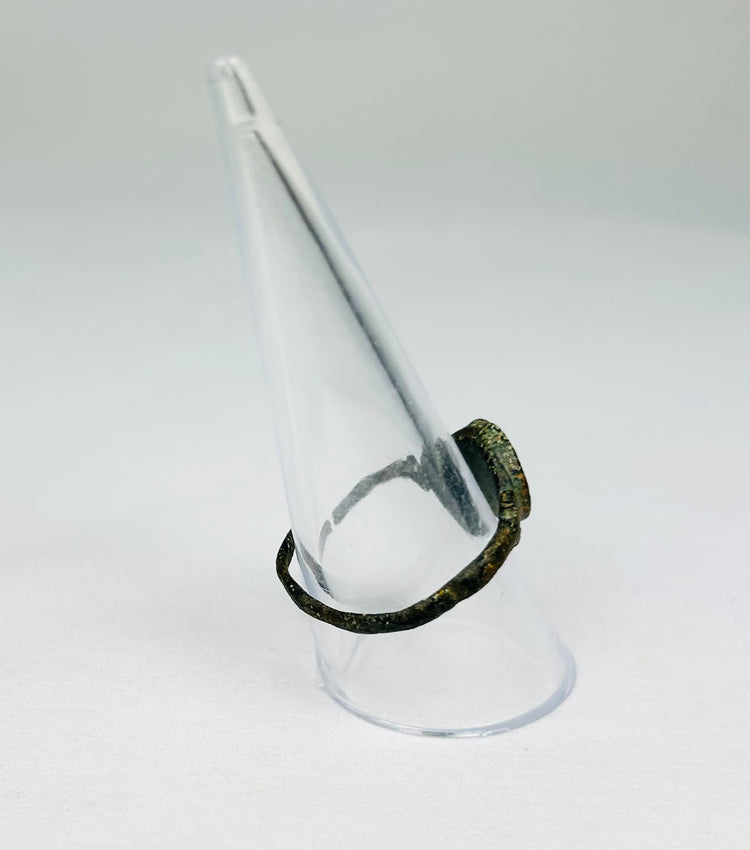Ancient Roman Bronze Seal Ring | Circa 150-250AD
Description
More
Less
Historical Context & Origin
Region: Roman Empire (Mediterranean)
Material: Cast bronze with engraved bezel
Period: Imperial Roman, 1st–3rd Century CE
Description
This ancient Roman bronze seal ring features a finely engraved hippocampus— the mythical seahorse with a horse’s head and forelegs and a fish’s tail. The hippocampus was strongly associated with Neptune (Poseidon in Greek mythology), god of the sea, and symbolized strength, grace, and the mysteries of the ocean. Rings of this type served both as personal adornments and practical seal devices, used to mark documents, property, or goods with the owner’s unique emblem.
Features
- Engraved bezel depicting a hippocampus (mythical seahorse)
- Symbolism tied to Neptune and Roman maritime power
- Cast bronze with developed patina from age
- Functional design intended as both jewelry and seal
Cultural Significance
Seal rings in Roman culture were essential tools of identity and authority, worn by officials, merchants, and elites to authenticate documents and possessions. The choice of a hippocampus reflects the importance of the sea in Roman trade, military expansion, and mythology, embodying divine power and the empire’s mastery of the Mediterranean. Such imagery reinforced both personal belief and social standing.
Condition
The ring shows a break in the band, a common occurrence for ancient bronze rings, though the bezel and hippocampus design remain well-preserved. The surface patina highlights its antiquity while retaining the integrity of the engraved imagery.
Dimensions (approximate)
Ring Size: 9.5 US
Age
1st–3rd Century CE
Description
Historical Context & Origin
Region: Roman Empire (Mediterranean)
Material: Cast bronze with engraved bezel
Period: Imperial Roman, 1st–3rd Century CE
Description
This ancient Roman bronze seal ring features a finely engraved hippocampus— the mythical seahorse with a horse’s head and forelegs and a fish’s tail. The hippocampus was strongly associated with Neptune (Poseidon in Greek mythology), god of the sea, and symbolized strength, grace, and the mysteries of the ocean. Rings of this type served both as personal adornments and practical seal devices, used to mark documents, property, or goods with the owner’s unique emblem.
Features
- Engraved bezel depicting a hippocampus (mythical seahorse)
- Symbolism tied to Neptune and Roman maritime power
- Cast bronze with developed patina from age
- Functional design intended as both jewelry and seal
Cultural Significance
Seal rings in Roman culture were essential tools of identity and authority, worn by officials, merchants, and elites to authenticate documents and possessions. The choice of a hippocampus reflects the importance of the sea in Roman trade, military expansion, and mythology, embodying divine power and the empire’s mastery of the Mediterranean. Such imagery reinforced both personal belief and social standing.
Condition
The ring shows a break in the band, a common occurrence for ancient bronze rings, though the bezel and hippocampus design remain well-preserved. The surface patina highlights its antiquity while retaining the integrity of the engraved imagery.
Dimensions (approximate)
Ring Size: 9.5 US
Age
1st–3rd Century CE
You May Also Like































